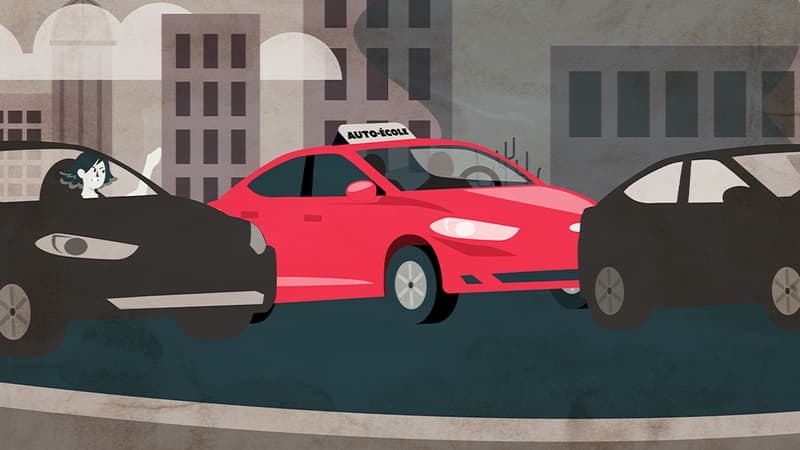Beginner drivers “are not all in the same boat, that’s for sure.” Patricio Crespo, president of the network of driving schools and training centres for driving licences (CER), is aware that statistically students are more likely to obtain a driving licence on the first attempt in rural areas than in large cities.
This is also what the BFM ranking of the best driving schools in France reveals, based on success in the driving license exam in the first quarter of 2024. The result is clear: establishments in the Paris region achieve results significantly worse than those established in rural departments.
>> Where to get your driving license? The ranking of the best driving schools
All the departments of Île-de-France are thus below 60% success rate on the first pass: 58% in Val-d’Oise, Seine-et-Marne and Seine-Saint-Denis, 49% in Hauts-de-France. Seine, 47% in Paris and Essonne and even 46% in Val-de-Marne. Far from the scores of the leading trio: 75.9% success for Hautes-Alpes, 75% for Deux-Sèvres or even 73% for Haute-Corsica.
“It is a trend that we have been observing for a long time and that we have not been able to stop,” says the president of the driving license training centers.
Obstacles, traffic jams…
Patrick Crespo explains this phenomenon by several factors, firstly by the traffic density of large cities, which makes the driving area more complex, although the examination centers are located most of the time outside of large cities. In Île-de-France, for example, the exam is not held in the center of Paris, but in the inner and outer suburbs, in municipalities such as Gennevilliers, Clamart, Rungis, Bobigny and even Vélizy.
“However, it is an aspect to take into account,” says the specialist. “Obviously there are fewer obstacles on the road when you are driving through a town with fewer than 5,000 inhabitants and there is hardly a single red light… There is less risk of encountering difficulties.”
An analysis shared by Marie Martinez, vice president of Unic, the main union of independent drivers. The candidates themselves know this very well.
“They migrate out of the big cities to take the exam,” he explains. “Sometimes they are willing to travel many kilometers to get away, in the hope of having better exam conditions.”
Especially since “the Paris region is a center of inspectors” – who do not necessarily want to stay there – which aggravates the increasingly long waiting times for exam places.
“Less carefree” but “less playful”
The other factor to consider is the age of the candidates. Patrick Mirouse, president of the ECF driving school network, recalls that in cities like Paris, Lyon and Marseille, the population tends to get their permit “later, simply because mobility can be regulated by other means”, such as the use of two -Wheels, public transportation or walking.
“The average age for obtaining a driving licence is 18 in the provinces, compared to 23 or 24 in the Paris region,” says Patrick Crespo of the CER network.
However, road safety professionals establish a link between the age of candidates and the driving license approval rate. “The younger you learn to drive, the easier it is and, conversely, the later you learn to drive, the more apprehension arises,” according to Patrick Mirouse.
“Candidates who are a little older and less carefree are generally also less motivated and happy about the idea of getting their license, which can make things a little more laborious,” confirms Patrick Crespo.
The latter also entails “a cultural difference” in the way of responsible travel. “We are going even further back when we have always worked without a car, with public transport. The mood is not the same when deep down we have the impression that we don’t really need it.”
Accompanied driving, a winning formula
Finally, professionals in the sector agree that the success rate on the first pass has a direct relationship with the level of development of accompanied driving. To date, this training, which allows novice drivers to get behind the wheel alongside their parents from the age of 15, has achieved excellent results.
“Accompanied driving has a success rate of 75% on the first pass, compared to 59% in the traditional sector,” recalls Patrick Mirouse.
However, this practice is much less developed in large cities than in more rural areas. “This is simply explained by the fact that in these large metropolises fewer and fewer households own a car… which immediately closes the door to accompanied driving,” explains Marie Martínez, from Unic.
Although the numbers work against them, license candidates who have been trained to drive in Paris, Lyon or Marseille have, in the opinion of professionals, an advantage. Their painful experience on busy roads prepared them to face complex and unexpected situations on the day of the dreaded exam.
Source: BFM TV


